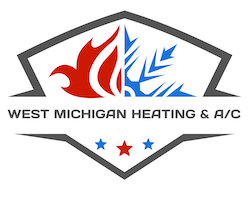
The Nest thermostat is one of the best-selling smart thermostats you can buy. And for good reason. It learns your temperature preferences and makes an energy-efficient schedule to match. And by geofencing with your phone, the Nest Learning Thermostat and Nest E realize when you’re at your house or out and about and can raise and lower temperatures to help you save even more.
The Nest can be used with a wide range of 24-volt heating and cooling systems, but it’s always a smart idea to use the Nest thermostat compatibility checker before installing one. Don’t forget to check with your energy company for valuable rebates, since you might be able to get a Nest for free or close to it.
Once you’ve confirmed it’s compatible, you can either install it yourself or hire a HVAC professional like West Michigan Heating & Air Conditioning Services. If you’re installing it without help, you’ll see a terminal for the C-wire, or common wire. This wire is solely used for powering your thermostat. If your house or HVAC system is older, you might not have one of these wires. Most of the time, Nest says this isn’t an issue as the thermostat can draw ample power from other heating and cooling wires.
Sometimes, your heating and cooling system could require that C-wire. And here’s why.
Why Your Nest Keeps Losing Power and Other Malfunctions
The Google Nest Thermostat is better than aging programmable thermostats that rely on a combination of wiring and AA batteries for power. It relies on a rechargeable lithium-ion battery and wiring to sync with Wi-Fi, power its digital display and turn on your heating and cooling system.
8 Common Nest Thermostat Malfunctions
If it can’t get ample power, Nest says you could have some of these troubles:
- Bad battery life.
- Thermostat motion sensing won’t operate.
- Your thermostat occasionally disconnects from Wi-Fi.
- Your system suddenly turns on or off, or won’t shut off.
- Your system is making weird noises, such as chattering, stuttering, clicking or thumping.
- Heating or cooling is short cycling, or frequently turning on and off in a short period of time.
- There is a delay message on your Nest thermostat’s screen, along the lines of “heating is delayed for 2:30 minutes.”
- The system fan is always working, won’t switch on or turns off and on repeatedly in a short period of time.
You could think something is suspect with your heating and cooling system, but if you just got the Nest, we recommend you start with your thermostat first. This is especially true if the weather is mild, and you haven’t been using your heat or air conditioning frequently.
Our Specialists Can Fix Nest Thermostat Problems
If you’ve gone through Nest thermostat troubleshooting by yourself but can’t repair the problem, a smart thermostat pro including one from West Michigan Heating & Air Conditioning Services can assist you. We can determine the issue and install a C-wire, if required.
Smart thermostats including the Nest are created to make your life more convenient, by automatic energy-efficient programming and the ability to monitor settings while you’re away from home. It’s an annoying experience when yours won’t operate correctly, but our heating and cooling specialists at West Michigan Heating & Air Conditioning Services can take care of the trouble quickly.
If you’re experiencing odd heating and cooling behavior with your new Nest, reach out to us at (616) 319-1436 to request your appointment today.


